Inside North Korea’s Children’s Palace, a reporter finds children turning into robotic grown-ups
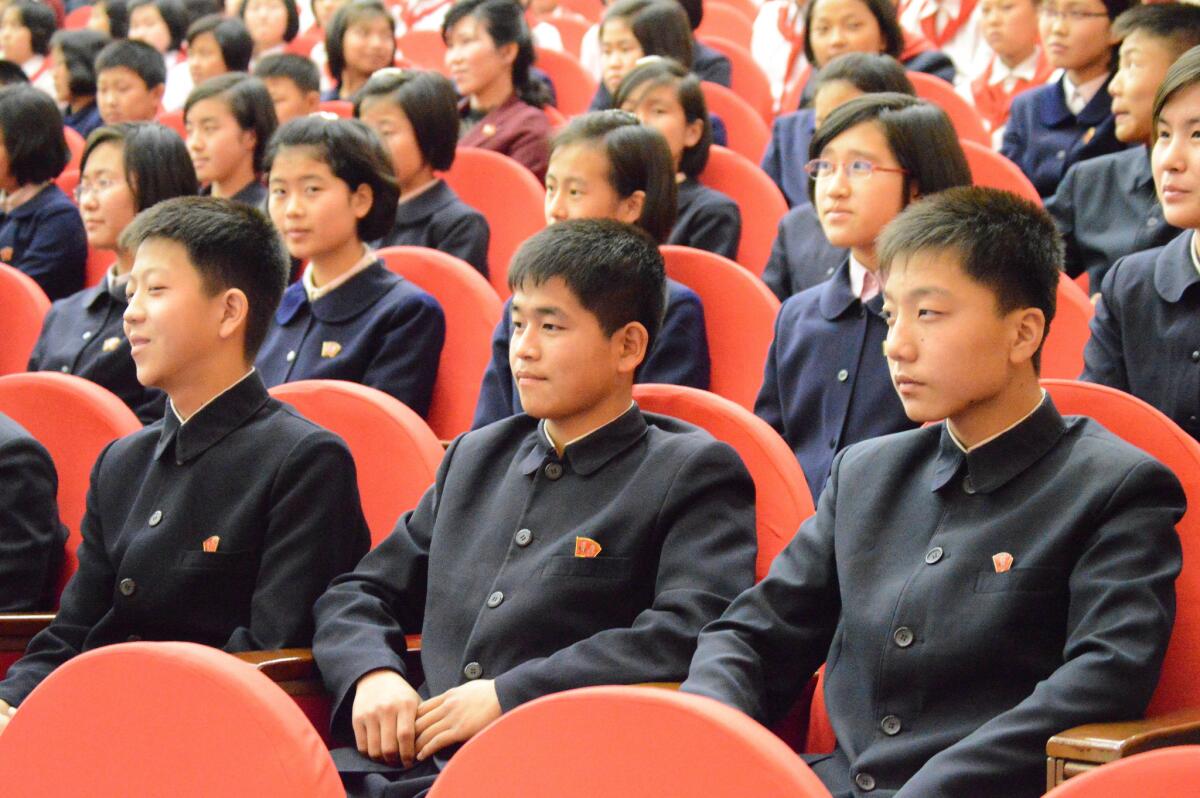
It was Thursday afternoon, and Kim Myong Hyok had a solemn role to perform, perhaps the biggest he’d ever been given in all of his 14 years.
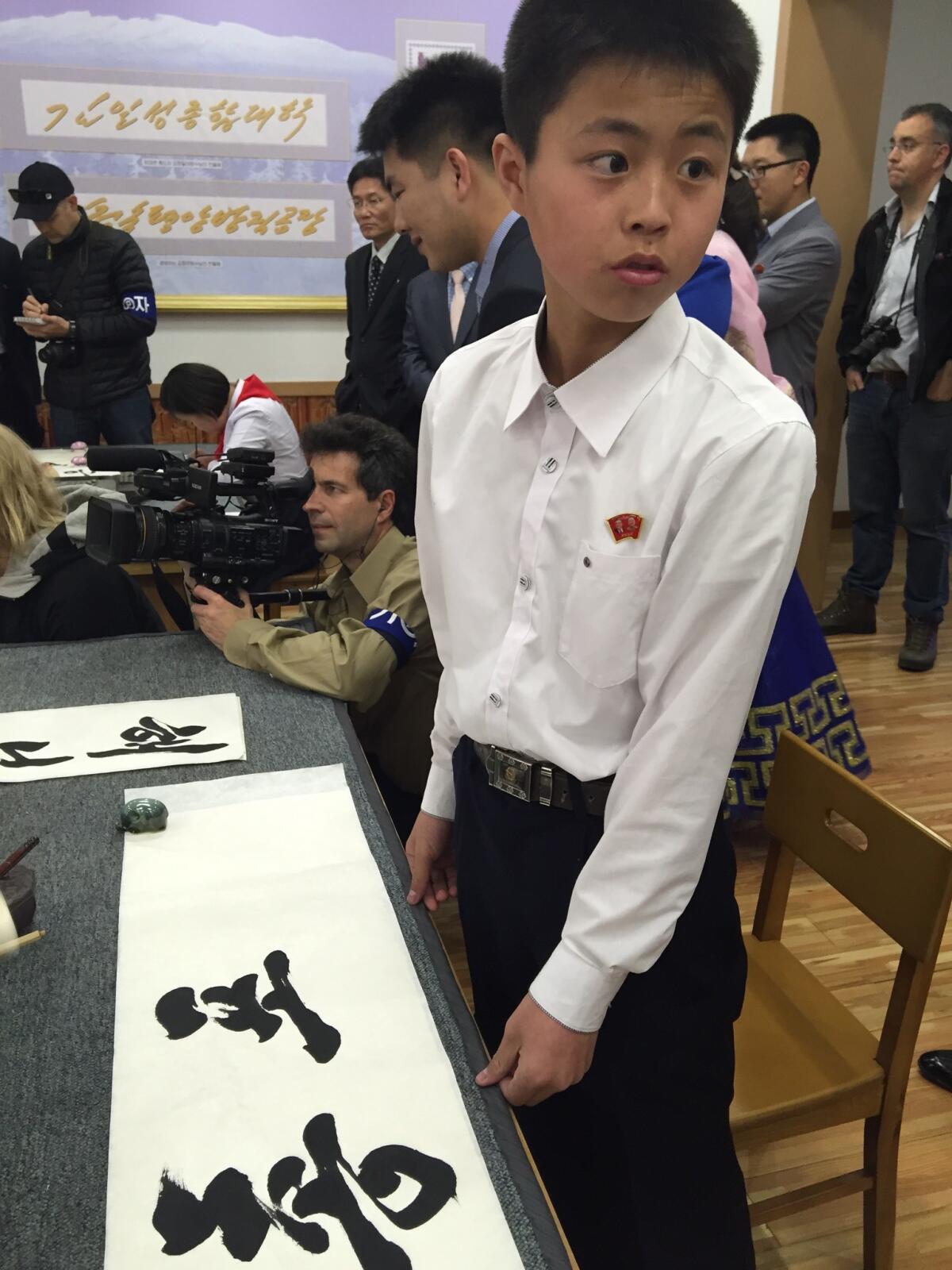
Dipping his calligraphy brush into a well of black ink, he carefully began to write out Korean characters on a sheet of white rice paper. Inches away, a group of foreign reporters jostled for camera positions as the strokes took form, trying to capture this moment of political theater at Pyongyang’s Children’s Palace.
Chong. Pok-tan. Gun and Bomb.
I too, had a role to play. And so, notebook in hand, I approached the wiry teenager, taking stock of his crisp white shirt and dark pants that nearly swallowed his slender frame. To me, he looked no more than 11, but above his breast pocket was a coming-of-age marker that’s required daily wear for all adults in North Korea: a red flag pin with the smiling faces of deceased national helmsmen Kim Il Sung and Kim Jong Il.
“Hello,” I said. “I’m a reporter from the United States. I’m wondering, can you tell me, what are you writing today?”
For a moment, Kim froze, his eyes darting from his paper to the ceiling and finally to the government interpreter/minder standing nearby. Then he seemed to recall what it was he was supposed to say to the enemy in his midst.
“I want to be in the army and defend our country and our marshal, Kim Jong Un,” he stammered. “The American imperialists and the Japanese are threatening us, so young people should serve in the army.”
The Children’s Palace, a massive, 2-million-square-foot building on the southwestern edge of the North Korean capital, is billed by the reclusive regime as a temple to youth, a testament to the care and devotion of the nation’s rulers to its future generations. A North Korean guide, pointing out the sweeping, half-circle design of the entryway, says it signifies the “loving embrace of a mother.”
A near-mandatory stop for all tourists and journalists allowed into the country on carefully scripted trips, the Children’s Palace was recently refurbished, at apparently great expense, on orders of Kim Jong Un, who became supreme leader in 2011 following his father’s death.
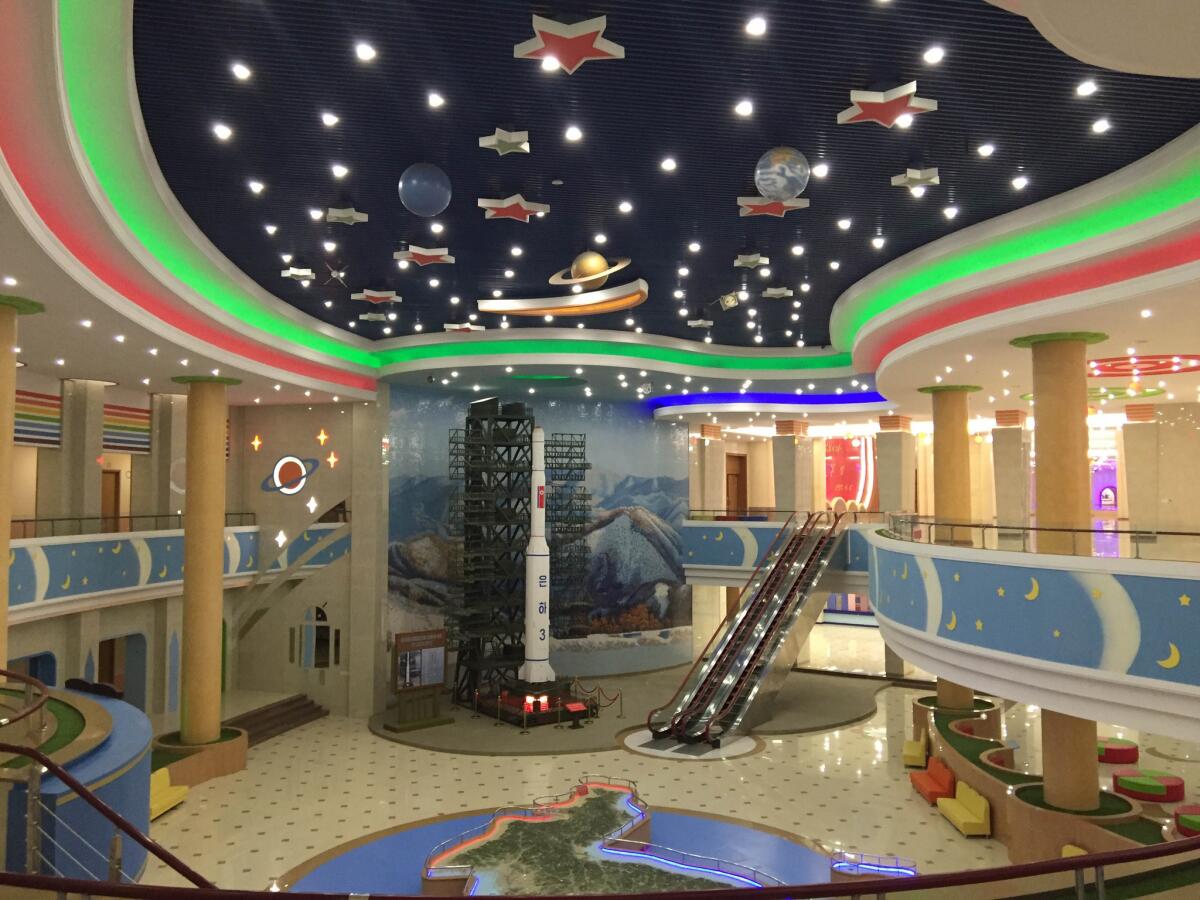
On Friday, Kim is convening a Workers’ Party Congress, the highest-level political gathering in the one-party state and the first such event since 1980. Some 130 reporters from overseas have been invited to witness the happenings, each assigned a personal minder/interpreter and shuttled to carefully selected sites to keep them occupied until the proceedings begin. There are no opportunities for unmediated glimpses of North Korean society; we can only draw impressions from the showplaces that reflect, presumably, the highest aspirations of the country.
So it was that the minders arranged an excursion to the palace on Thursday afternoon to have us see, first-hand, the top-rate extracurricular activities offered to the capital’s most gifted children between 11 and 16 years old.
I have no doubt that the talented North Korean youngsters granted access to this facility are enjoying the best their impoverished country has to offer, materially at least. There’s a pool building with a multi-tiered diving platform. Indoor basketball and volleyball courts. Classes in ballet, musical instruments, singing, embroidery and calligraphy. A computer lab.
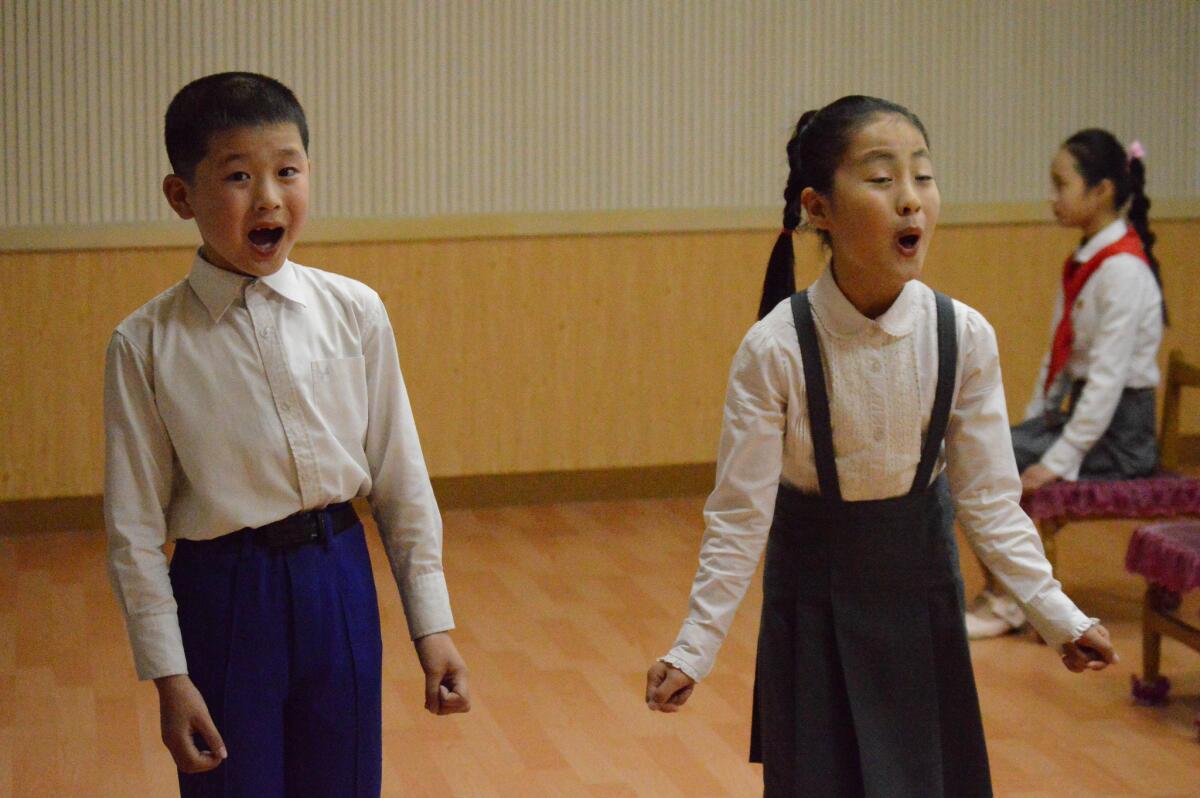
The walls are decorated with flowers, sailboats and stars. Whimsical light fixtures, looking like brightly colored balloons on a stick, stretch from floor to ceiling.
But for such a supposedly joyous place, the Children’s Palace can feel deeply depressing, an institution where adults have tried to mask life’s cruel realities with some brightly colored paint and some rainbows and unicorns.
The same might be said of schools everywhere, but the youngsters here seem to be in the process of metamorphosing into robotic grown-ups, learning how to subsume their creative spirits to the all-encompassing cult of personality and party that three generations of the Kim dynasty have created.
It is, after all, what is necessary to survive in this extremely controlled and controlling society.
In a singing classroom, the students expertly belt out a song about how they wish every day was New Year’s Day. Why? Because that’s when founding father Kim Il Sung would come to hear children sing at the palace, and what could be more glorious than performing for him every day for the rest of one’s life?
In a calligraphy workshop, young girls practice their needlepoint by sewing “2.16” and “10.10” – signifying the Feb. 16 birthday of Kim Jong Il and the Oct. 10 founding of the Workers’ Party, respectively.
After the guides spend 90 minutes herding us through classrooms, the pool area and gymnasium, our tour culminates in a large auditorium for a 45-minute performance. When we foreign guests arrive 10 minutes before show time, hundreds of adolescents are already seated in the hall, dressed in matching uniforms, their hands folded in their laps.
They are staring straight ahead.
None of them is making a sound.
The lights go down. The curtain goes up.
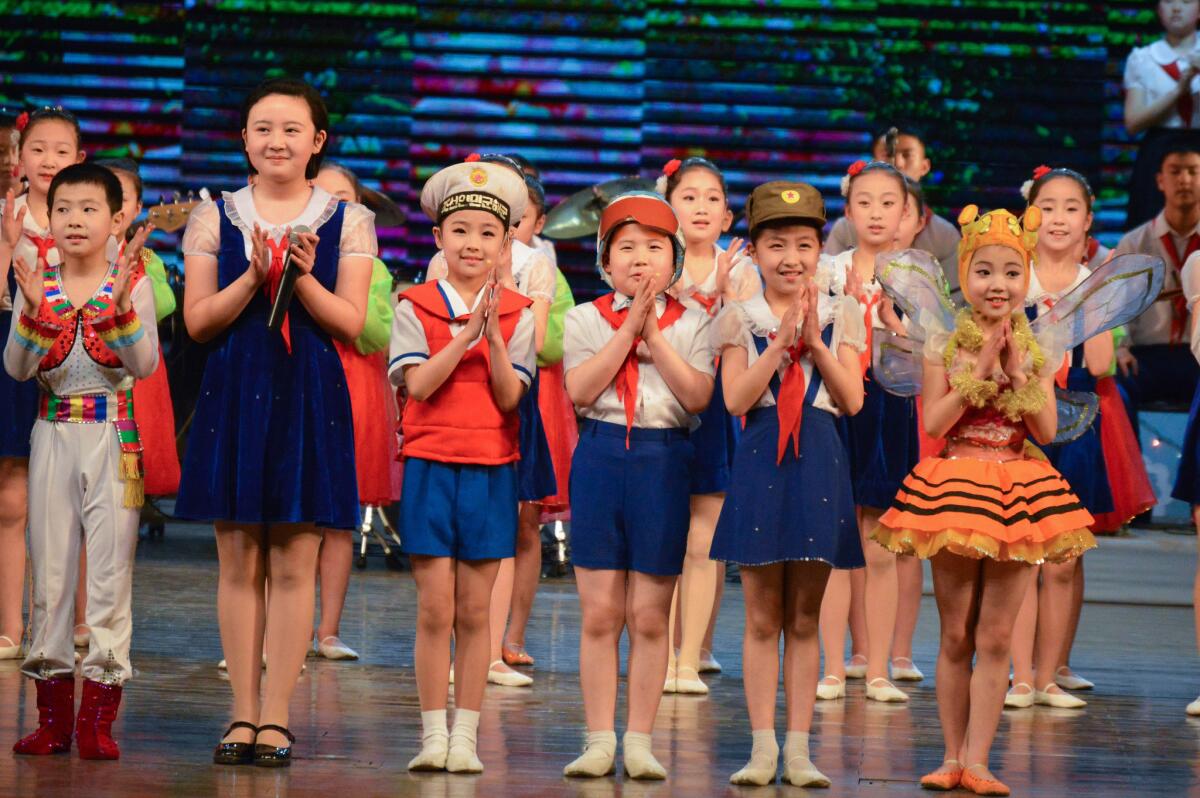
The first act is an orchestra with chorus. As the students sing patriotic songs, a video montage starts in the background. First come some fireworks, then footage of Kim Jong Un’s recent rocket and missile launches.
Later comes a song-and-dance number about the Children’s Palace itself. “This place is a dream, but if it’s a dream, I don’t want to wake up,” warbles a precocious young girl as three classmates in cute star getups dance stage right.
Then it’s on to a band of boys in matching turquoise sequined shirts, who belt out a tune about how they’re thankful to Kim Jong Un for giving some vans to the Children’s Palace so they can take driver’s education classes (in a country where no one has a private car).
There are a few brief segments without overt propaganda messages. An acrobatic young boy performs some amazing feats with hula hoops, without any political messaging.
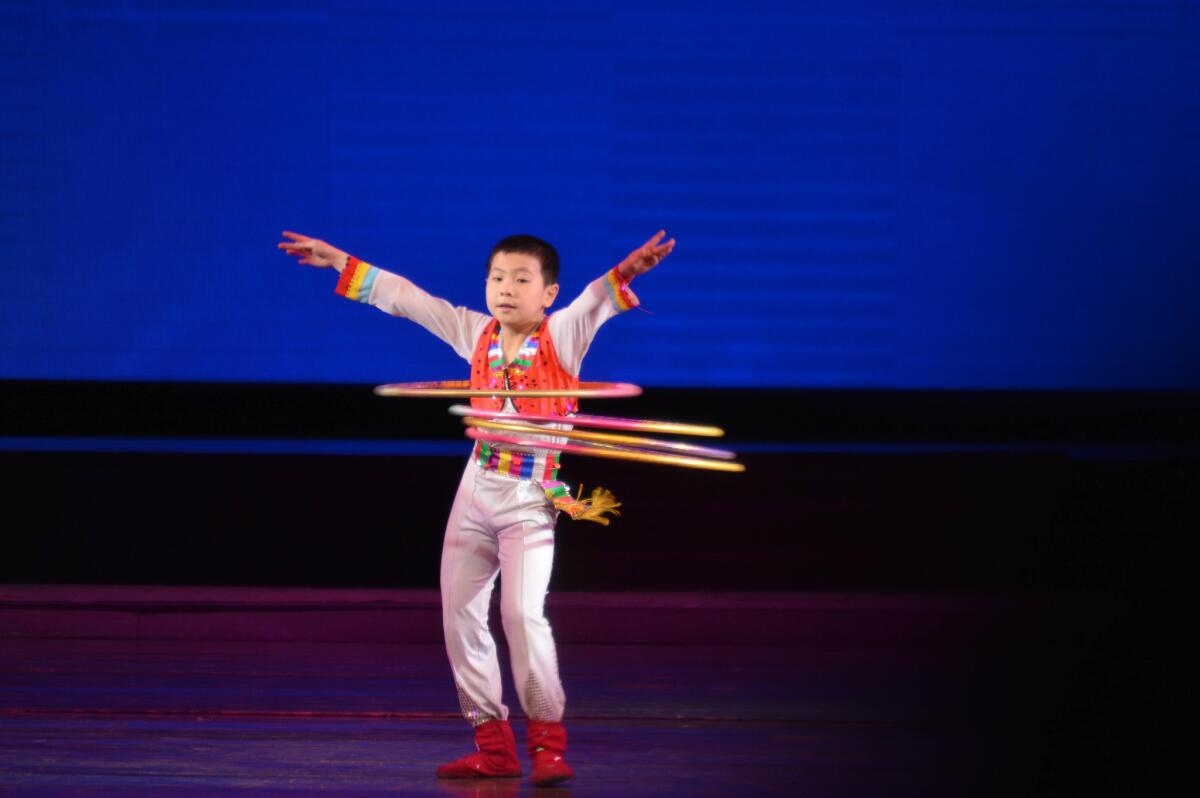
But he is the exception to the rule. Toward the end of the show, a large dance number features girls and boys singing about how they want to be pilots, seamen and artillery gunners. A final act features more singing, and Kim Jong Un’s face is projected against the backdrop.
The performers take their final bows, to rapturous applause. The foreign reporters and tourists file out.
But I’ve forgotten my backpack, and head back inside to retrieve it. To my surprise, the students in the audience are still sitting in their seats.
They are not chatting, not moving.
Just staring straight ahead.
There is one other journalist still in the hall. He notices the same thing, and his crestfallen look telegraphs our mutual sense of demoralization. We both reach for our cameras, instinctively, somehow compelled to document the moment.
And then, as we start snapping photos, there’s a crack in the ice. A student in the first row starts to crack up.
The giggles give way to grins. Suddenly, the entire auditorium is smiling at us, and begins to wave. “Goodbye!” one girl calls out in English.
Has the joke all been on us?
I will probably never know. But I have to hope. And for the first time all afternoon, I smile too.
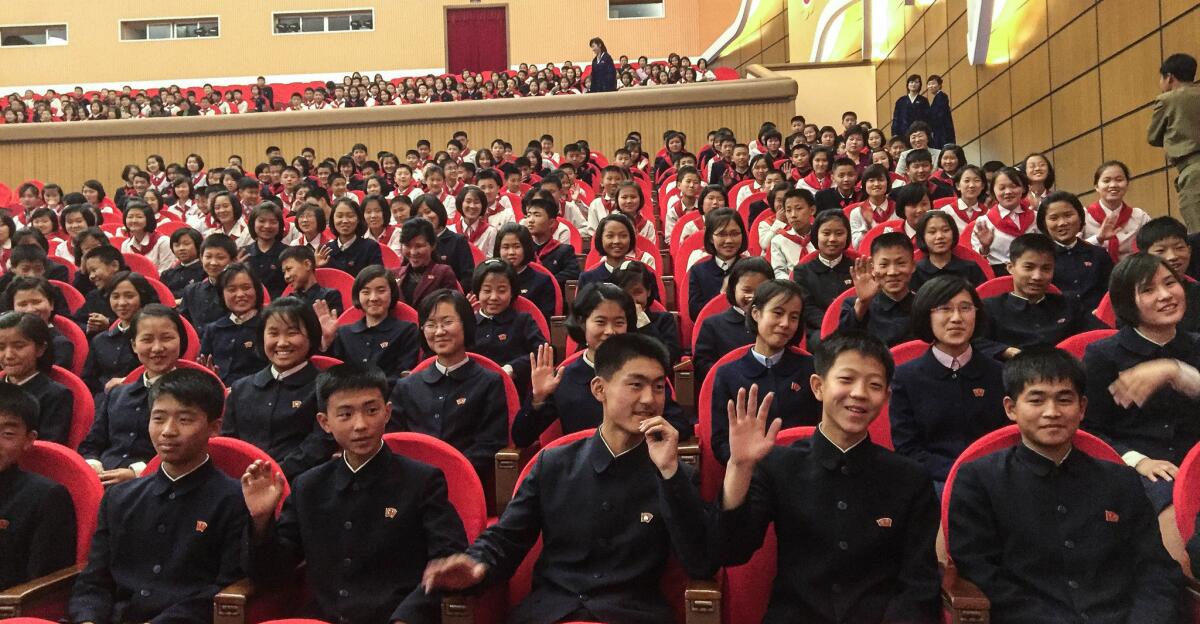
Follow @JulieMakLAT for news from Asia.
ALSO
A North Korean farm may not be what it appears
There's buzz in the air as North Korea gears up for a major political event
At a North Korean nursery school, tots get an early education in weaponry
Sign up for Essential California
The most important California stories and recommendations in your inbox every morning.
You may occasionally receive promotional content from the Los Angeles Times.








